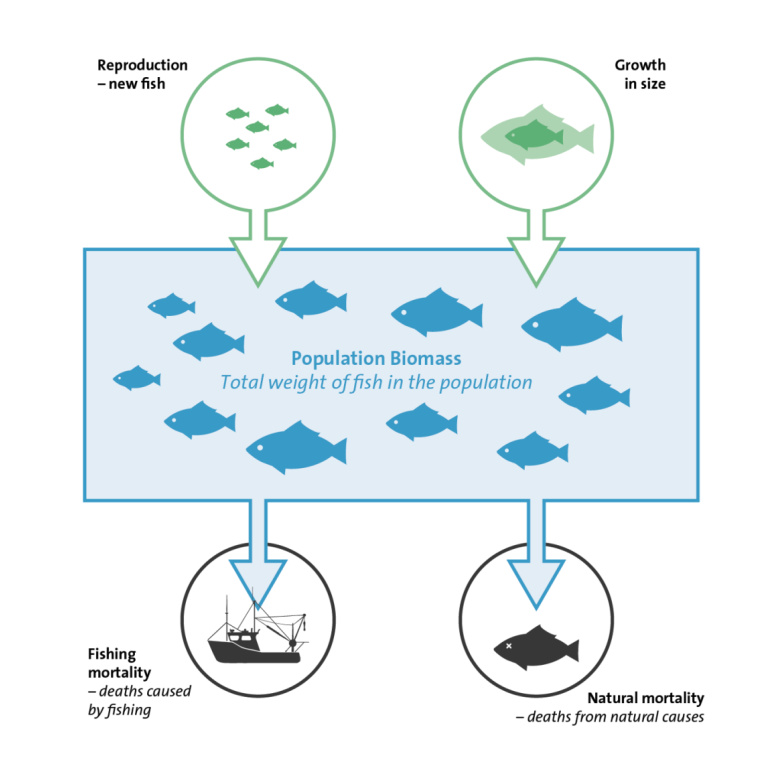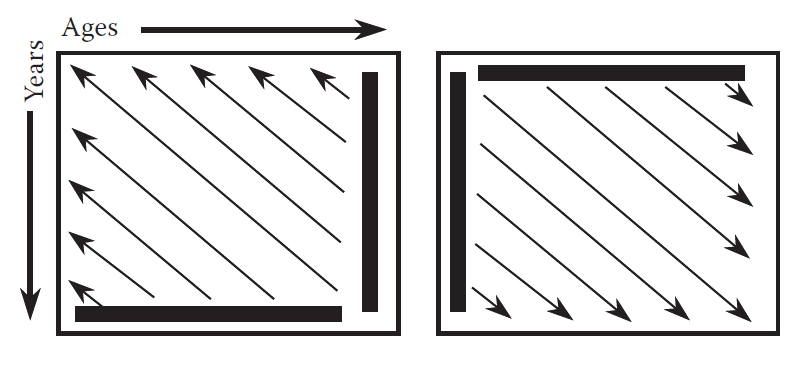Modelos avanzados en evaluación de recursos pesqueros
Dr. Giancarlo M. Correa
Cousteau Consultant Group
Presentación
Estructura
Serie de cursos orientado a análisis cuantitativo de pesquerías:
- Dinámica de poblaciones de peces en R
- Introducción a modelos de evaluación de stocks
- Modelos avanzados de evaluación de recursos pesqueros I
- Modelos avanzados de evaluación de recursos pesqueros II
Objetivos
- Fundamentos de modelos integrados de evaluación estructurados por edad.
- Estructura del la plataforma de modelado Stock Synthesis (SS).
- Implementación de modelos de evaluación sencillos en SS.
Proyecto
Para obtención de la certificación de aprobación.
- Se crearán dos grupos de trabajo.
- Objetivos:
- Discutir enfoques de análisis de datos pesqueros.
- Implementar un modelo de evaluación en SS.
- Se invertirá 25% de horas de clase (no habrán actividades fuera de clase).
- Presentación de resultados el último día de clases.
Participantes
Presentación de participantes:
- Nombre
- Ocupación
- Afiliación
- Área de experiencia ó interés
- Nivel de experiencia con modelos de evaluación
Conceptos básicos
Dinámica de una población explotada

Stockholm University Baltic Sea Centre
Sistema pesquero
Formado por diferentes componentes:

Evaluación de recursos pesqueros
Tiene como objetivo (Hilborn and Walters 1992):
- Conocer el estado actual del stock (i.e., nivel poblacional y estado de explotación)
- Reconstruir la dinámica histórica del stock
- Predecir la respuesta del stock a diferentes niveles de explotación
Forma solo un componente de todo el proceso de manejo pesquero, y tiene la finalidad de asesoramiento sobre explotación.
Métodos directos

Uso de métodos de observación directa, como campañas acústicas, de arrastre, ictioplancton, entre otros.
Métodos indirectos
Uso de modelos matemáticos y datos para explicar la dinámica del stock.
Basado en la estructura del modelo:
- Modelos de producción excedente: asume todo el stock como homogéneo
- Modelos estructurados por edades
- Modelos estructurados por tallas
Modelos estructurado por edades
Enfoque hacia atrás (backward) o hacia delante (forward):

Haddon (2011)
Forward approach
Abundancia Ny,a (y son años y a edades):

Haddon (2011)
Componentes del modelo
En un modelo de evaluación estructurado por edades tenemos los siguientes componentes principalmente:
- Reclutamiento
- Mortalidad (natural y por pesca)
- Selectividad
- Crecimiento somático
- Madurez sexual y fecundidad
- Movimiento
Plataforma de evaluación
Software o librería orientado a la implementación de modelos de evaluación de stocks (en general).
Ventajas
- No hay necesidad de codificar
- Comunicación más sencilla
Desventajas
- No pueden ser aplicables a todos los stocks
- Efecto de caja negra
Plataforma de evaluación
Ejemplos:
- Stock Synthesis (Methot and Wetzel 2013)
- MULTIFAN-CL (Fournier et al. 1998)
- SPiCT (Pedersen and Berg 2016)
- SAM (Nielsen and Berg 2014)
- WHAM (Stock and Miller 2021)
Modelos integrados de evaluación
Análisis integrado
¿Qué pasa si no temenos datos (o buena calidad de estos) en un periodo de tiempo? ¿Cómo implementamos un modelo de evaluación?
- ¿Truncar la serie de tiempo?
- ¿Crear datos de captura a la edad con poca calidad?
- ¿Implementar modelos de evaluación sencillos?
Análisis integrado

Combina diferentes tipos de datos en un único análisis. El ajuste a los datos se realiza por medio de una rutina de minimización de alguna función objetivo (Fournier and Archibald 1982).
Análisis integrado
Tipos de datos más comunes:
- Capturas agregadas
- Índices de abundancia
- Composición por tallas o edades
- Conditional age-at-length (CAAL)
- Marcaje y recaptura
- Close Kin Mark Recapture (Punt et al. 2024)
Análisis integrado
Se pueden listar algunas ventajas de estos modelos:
- Inclusión de gran diversidad y cantidad de datos
- Evita la necesidad de preprocesamiento (e.g., talla a edades)
- Captura la incertidumbre de una mejor manera
- Facilidad de investigar el impacto de diferentes fuentes de datos sobre resultados (Magnusson and Hilborn 2007).
Análisis integrado
Desarrollo a través de los años:
- Fournier et al. (2012): inclusion de datos auxiliares.
- CAGEAN (Deriso et al. 1985)
- Stock Synthesis (Methot and Low 1990)
- AD Model Builder: plataforma para construir un IA propio.
- MULTIFAN-CL (Fournier et al. 1990)
- CASAL (Bull et al. 2002)
- Stock Synthesis 2 (Methot 2005)
- Stock Synthesis 3 (Methot and Wetzel 2013)
Stock Synthesis
Stock Synthesis
- Plataforma de modelado estadístico de una población estructurado por edad (Methot and Wetzel 2013).
- Puede ser utilizado con pocos y con gran cantidad y diversidad de datos.
- Utilidad en manejo pesquero.
- Programado en AD Model Builder. Ver código fuente aquí.
- Procesamiento de resultados usando la librería en R r4ss.
- Ampliamente utilizado actualmente.
Stock Synthesis

Stock Synthesis Virtual Lab
Stock Synthesis

Stock Synthesis Virtual Lab
Stock Synthesis
Algunos beneficios de usar SS:
- Flexibilidad de modelar la dinámica del stock
- Integra muchas fuentes de datos
- Mejor cuantificación de la incertidumbre
- Puede incorporar modelos simples a complejos
- Comunidad de personas de soporte
- Menor probabilidad de tener bugs
- Librerías de soporte (e.g. r4ss, ss3sim)
- Facilidad de compartir y comunicar resultados
Stock Synthesis

Stock Synthesis Virtual Lab
Laboratorio
Software requerido
- Lector de texto plano (e.g., Notepad++)
- Instalar r4ss package:
- Explorar SS Virtual Lab
- Descargar ejecutable (
ss3_win.exe) - Descargar manual (
SS330_User_Manual.pdf)
- Descargar ejecutable (
- Explorar ss3sim package
Proyecto
- Explorar datos
- Crear directorio de trabajo
Referencias
